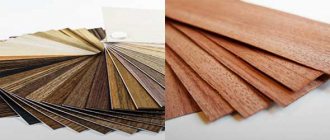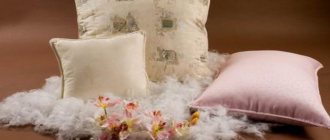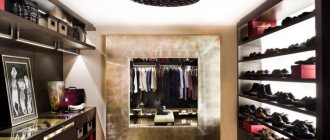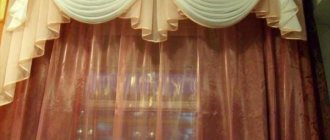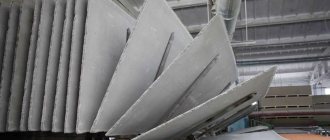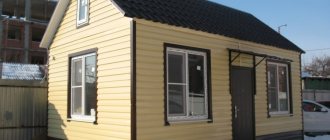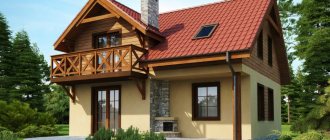The comfort of the home is largely determined by the furniture. The mood of all household members depends on its quality and aesthetics. Remember how pleasant it is to touch the natural leather of some sofas and armchairs, how sometimes you want to sit on elegant chairs and how much joy just one glance at a designer coffee table or an original chest of drawers with a mirror can give.
The quality of upholstery of upholstered furniture is the key to its long service life and pleasant tactile sensations. Nubuck is a wonderful fabric for upholstered furniture, so that the sofas and armchairs in the room will attract with their velvety and sophistication. And its wear resistance and water-repellent properties allow us to speak of high-quality premium furniture made from it.
Description of material
Nubuck is a natural material, specially tanned leather with a fine, velvety, invisible pile, its thickness ranges from 0.1 to 2.4 mm. To obtain it, chrome tanning is carried out, and then the front side is treated with fine abrasives. As a result, it looks soft and matte, like velvet.
To do this, use the following means:
- Sand.
- Sanding paper with a fine-grained abrasive coating.
A layman could easily mistake non-oiled nubuck for suede, but it is made from a different type of leather, most often from cattle, although both are essentially related and are produced by treating the leather in a similar way.
Types and their properties
There are two types of artificial nubuck:
- woven - created on the basis of woven fabrics (only in this case can we talk about nubuck fabric);
- non-woven - obtained by spraying polymer layers (more common than others, suitable for winter);
In addition to shoes made from artificial nubuck, there are furniture fabrics created using the same technology. They are softer, more delicate to the touch, and look beautiful in the interior. Such materials are processed using special “anti-claw” technology, which protects the casing from scratches by pets.
In general, both shoe and furniture varieties are practical, look stylish, do not require complex care, and are almost identical in properties.
Kinds
Both natural and artificial raw materials are used for furniture upholstery and shoe manufacturing. Both types have their pros and cons.
Artificial
To create furniture, a material with a durable textile base is often used, and for shoes one that has a multilayer polymer base is used. The type of nubuck is different:
- strength, wear resistance;
- does not absorb moisture;
- has a beautiful appearance;
- does not deform, does not stretch.
It is cheaper than natural nubuck leather, but practically does not differ from it in technical and visual characteristics. This is an excellent upholstery for upholstered furniture. It is used to create spectacular sofas, armchairs, chairs and poufs. It resists external influences better, is easy to clean, and is less susceptible to dust and pet hair.
Natural
This material has greater density and less elasticity than suede, but generally replicates its qualities. To understand what natural nubuck leather is, you need to know the technology of its production.
- A thin outer layer is removed from the skin of an animal, usually a calf, so it becomes pleasant to the touch and velor-like in appearance.
- Nubuck has virtually no lint, only a soft, matte surface.
- A material is classified as an eco-product if natural products of natural origin, tanning and dyeing were used for its production.
Oiled
Has moisture-repellent properties. Nubuck is impregnated with a fat-containing compound called oiled or nubuck-oil. Unlike untreated raw materials, it becomes heavier and damper to the touch, but does not get wet like regular ones. Shoes are made from it that are not afraid of water, and thanks to impregnation, it gains strength.
Material characteristics
Many “advisers” on the Internet confuse nubuck with suede, velor, genuine leather and even fabric. Let's conduct a short educational program on what nubuck is and how it differs from other materials, what types exist. Often people are looking for an answer to the question of whether it is leather or not.
There have long been several methods of tanning leather. This is done using fat, salt, extracts of certain types of trees (for example, oak), sand and other materials. The main difference between nubuck and suede is the material and tanning method. Suede is made from the skin of small cattle, and nubuck is used from large cattle (deer, elk, yaks). Tanning of suede is carried out using fat and fat-formaldehyde compounds. Nubuck is tanned with mineral salts, most often chrome.
Leather treated in this way is more pliable and wear-resistant. Shoes and furniture upholstery made of nubuck offer excellent resistance to stretching and impact loads.
But it must be remembered that both natural suede and natural nubuck are capricious materials. They are demanding of external conditions and require constant care.
The main advantage of natural nubuck is the aesthetic and tactile pleasure from contact with it. Lying down on a sofa upholstered in natural nubuck is like touching something soft and tender! And shoes made from it look great in any situation and with any style.
Where is it used?
This material has two directions:
- Furniture . Upholstered furniture fabric is used to cover designer furniture, creating surfaces of chairs, armchairs, sofas and beds that are pleasant to the touch and to the eye.
- Shoe. The material protects our feet from overheating, hypothermia, and moisture.
Nubuck is a very beautiful material for shoes, women's boots and designer shoes.
In footwear, natural oiled nubuck is more common, as it has water-repellent properties. A natural analogue is better suited for furniture production - it is more pleasant to the touch.
How to choose blankets 220x240?
Watch the video on how to put European covers on upholstered furniture.
Photo of memory cotton fabric: .
Which is better nubuck or leather
When choosing natural products, you need to understand that both types are leather. The characteristics and properties of the two are similar; the choice determines aesthetics and taste.
As for artificial leather, it is better to compare it with synthetic leather. Leather or nubuck can have different qualities, often determined by price, which will further affect the durability of the product.
What kind of material
Regardless of whether we are talking about artificial or natural nubuck, reviews of products made from it are positive. It is believed that the man-made analogue is more affordable and more practical to use. Outwardly, it looks almost like suede, only denser.
Made from polymer raw materials that do not allow water to pass through. If you don't know how to distinguish natural nubuck from synthetics, pay attention to absorbency. If natural leather gets wet, even if a little, then man-made leather does not. Plus, such shoes practically do not allow air to pass through, and sometimes the foot becomes uncomfortable in them.
To understand and imagine exactly what kind of material this is - artificial nubuck, let's turn to the history of its creation.
A little historical background
We are talking about one of the varieties of flock - a large group of textiles characterized by a characteristic fleecy surface. As a rule, these are non-woven materials, but artificial nubuck can be different - both woven and not, depending on the manufacturing technology chosen by the manufacturer.
It was invented back in the 20s of the last century as a replacement for genuine leather, or rather suede. The resulting material turned out to be much more practical than the natural prototype and quickly won the love of consumers.
And yet, the acquaintance will be incomplete without a detailed description of this stylish polymer canvas.
Description of matter
Externally, the material looks like carefully crafted, beautiful leather or velor, so many people confuse the materials. However, in fact, it is a multilayer polymer fabric that has a structure reminiscent of natural surfaces.
What is better - natural suede, velor or polymer nubuck? It's difficult to answer. But if we talk about the textiles described, then it is much more wear-resistant than any similar material, it does not allow moisture to pass through at all, which is ideal for demi-season shoes. Thanks to the listed properties, it wears well in spring and autumn, but in cold weather it can create discomfort, which we will discuss below.
The difference between nubuck and suede
Nubuck and suede are types of leather. The difference between them is that the skin of which animal was processed.
Suede
Made from livestock skins: cow, goat, sheep. Deer is considered to be of the highest quality. It is thin and delicate, smooth and elastic, and is used to make dresses that fit the figure.
The cheapest suede is pork. It is quite rough and dense, and can be tough. It is easy to distinguish by its appearance. On its surface there are microscopic holes left after removing the bristles, located in groups of several pieces.
High-quality suede does not have “disheveled” pile, it is soft and fluffy, but its surface is more textured than that of smooth velor nubuck. This is due to the fact that the front surface of the reverse suede is the bottom layer of skin in contact with the subcutaneous tissues of the animal.
Nubuck
Initially, elk or deer skins were used for nubuck, but now calf skins are not used. It is tanned and sanded on the outside so that the surface looks matte, but does not have a pronounced hairiness.
It is believed that suede does not tolerate moisture well, but impregnation agents make it moisture resistant. Oiled nubuck has the same qualities, but is denser and more durable.
Proper care of nubuck shoes
Nubuck does not like moisture, so try to avoid it: do not wear nubuck shoes However, if you do get shoes , regular shoe cleaning products used for leather will not work for you - they will destroy the nubuck . To care for nubuck shoes, special products and brushes have been developed that carefully remove dirt and preserve the texture of the material.
Before cleaning contaminated nubuck shoes shoes . Take a special brush for nubuck and remove dirt from the top and sides of the shoe, and remove dirt from the heel and sole with a flannel cloth that can be slightly wetted. If whitish spots or streaks appear on your shoes, you can remove them with a damp cloth, then dry the shoes and continue cleaning. After cleaning with a sponge, apply a waterproof paint, then use a water-repellent spray.
If heavily soiled, more intensive nubuck shoes But this is not washing in the usual sense - such a procedure will make the skin ugly, brittle, and the shoes will become unusable. Nubuck shoes should be washed with ammonia diluted in water (a few drops per 3 liters) using a damp flannel cloth or microfiber sponge. The cloth should be damp, not wet. After washing, you need to comb the pile with a special rubber brush. Dry your shoes and apply a water repellent.
But even if the weather is dry outside, it is necessary to clean and treat nubuck with waterproof impregnation every day. If you see a speck of dirt on your nubuck boots, but you do not have the opportunity to properly clean them right now, then take a nail file and carefully remove the dirt with it.
nubuck shoes storage : such shoes should be stored in loose boxes or bags that are well-permeable to air, after cleaning the shoes and applying protection.
General care recommendations
Natural material will have to be taken care of more carefully. It should not be rubbed too hard because whitish marks, scratches, lint or shiny areas will appear on the surface. Wet shoes should be dried by stuffing them with crumpled paper to avoid deformation. A dry surface should be cleaned with a soft rubber brush without applying significant force.
The artificial one can simply be wiped with a damp cloth, and then slightly straightened with a soft brush - that’s all the care is.
When it comes to care products, it is best to use special sprays. They cover the surface with a thin layer, mask minor damage and do not “glue” the pile, preserving the properties of the material and its beauty.
Rules of care
Things made from this material are classified as capricious and expensive goods, so not everyone decides to buy them. According to modern trends, winter and summer shoes are made from it. Recently, sneakers, sports boots and sandals have become fashionable. For everyday use, such products will be impractical, but with proper care you can extend their service life.
The first rule of good handling of nubuck is not to wear shoes made from it outside in rain or wet weather. The material is intended only for dry climates, indoors and warm air. When purchasing products, you will have to spend money on additional goods. For maintenance you will need the following tools:
- brush for cleaning dirt;
- paint for the material to match the shoes;
- nanospray;
- drying liners.
It is necessary to treat the surface of the product, dry it and brush it again. The last layer should be the application of a protective agent. It will create a barrier that prevents the absorption of moisture, reagents and dust. Prevention will protect the material from rapid contamination.
In winter, it is easier to care for shoes, since there is no dust and liquid dirt. But the snow in cities is never clean, so you still have to clean the nubuck. You can wipe the surface of the products with flannel and dry them from moisture. If your shoes are wet through and through, you cannot immediately clean off the dirt from them. It is necessary to stuff the shoes with crumpled paper or newspapers to dry them completely. You can also use canvas bags with rice or sea salt for this. These substances quickly absorb moisture. They also recommend using electric earbuds, but you should not turn them on at full power.
It is more difficult to care for summer shoes made of nubuck. Even a few minutes on a dusty street can destroy all the elegance of shoes or sandals. To remove dirty deposits, you need to use a special suede brush or sponge. After a walk, you can apply cleaning foam, and any stains can be easily dealt with with a regular office eraser. Once they rub the dirt, it will easily come off and the pile will rise. As a result, the product will take on a fresher look.
Shiny spots occur due to the fact that the fibers roll off. Excess shine is removed with cotton pads soaked in ammonia.
The skin is lifted with a special brush or sponge. To completely renew the product, they give it a steam bath. Water is boiled in a large container, as soon as steam appears, a pair of shoes is held over it. Then the material is wiped with a flannel cloth.
Properties of nubuck
Natural fabric is very capricious and demanding to care for. So that the product always looks
attractive and beautiful, it requires constant care using special products.
The main advantage of the material is the aesthetic pleasure of its velvety structure.
It is very pleasant for a person to lie down on a sofa upholstered in nubuck or put on boots made of this leather. Shoes made from it are very attractive and appropriate in any situation.
Pros and cons of natural nubuck
Many men and women love this material for its beauty and durability. Shoes, shoes or boots
These leathers
will always look great and suit any occasion .
This undeniable advantage makes buyers pay attention to such models. But along with such advantages, there are also a number of disadvantages. They can turn a buyer away from such an attractive pair of shoes. These include the following.
- Additional costs for care products.
- Regular cleaning using special brushes and chemicals;
- Rapid loss of attractive appearance if handled carelessly;
- difficult cleaning.
Important! If a person is not afraid of such capricious material, such boots will be an excellent addition to the wardrobe.
Natural fabric is sometimes treated with special fatty compounds, in which case such careful care of the boots is not required. But still, these are not shoes for every day . In rainy or too humid weather, such a pair will not work. It will quickly gain moisture and lose its beauty and visual appeal.
In addition, if such an incident occurs and the shoes get wet, they will have to be dried for a long time and thoroughly. The use of electrical appliances or heating radiators is strictly prohibited. This can completely ruin your shoes.
Pros and cons of faux nubuck
Artificial material looks no less attractive and solid.
It also has a noble velvety structure and deep colors. Thanks to the layered manufacturing method, when polymer layers are applied to each other, the fabric is dense. This makes it resistant to adverse external influences. Shoes made from artificial nubuck have the following positive characteristics:
- durability;
- wear resistance;
- attractive appearance;
- pleasant tactile sensations when in contact with the material.
Important! The synthetic origin of the shoes makes it possible to expand the color range and offer customers the most incredible shades.
Synthetic fabric is resistant to temperature changes and humidity outdoors; scratches and creases are more difficult to form on its surface. These shoes look attractive and last longer than genuine leather.
In addition, the undoubted advantage of synthetically developed fabric is its affordable price . Compared to genuine leather, it is quite affordable for most buyers. People most often pay attention to the artificial interpretation of the original fabric because of its improved properties.
Advantages and disadvantages
Before buying, many people ask the question: what is better - nubuck or leather? Of course, there is no definite answer; everyone decides for themselves what is more important to them. For example, consider natural nubuck, without treatment with oils and other reagents.
Let's start with the pros:
- Good air permeability.
- Beautiful and elegant, soft, pleasant to the touch.
- Quite durable, wear-resistant, resistant to heavy loads.
- It retains heat well, even when it's cold and rainy outside.
- Its moisture resistance is worse than that of smooth leather, but better than that of suede.
However, the material has its disadvantages:
- Despite their resistance to moisture, using shoes in rainy, slushy weather has a bad effect on their appearance and quality.
- Difficulties in care and cleaning from contamination.
- Rapid loss of appearance in case of irregular care.
- Costs for special care products.
Of course, such shoes cannot be the only pair for the season, otherwise they will quickly become unusable. The best solution would be to wear it only in dry weather, when long walks are not expected, since it will also be difficult to clean off the dust.
How to paint nubuck
Nubuck needs to be painted periodically. You can only use those compounds that are intended for this material, otherwise you will destroy the pile. You need to paint nubuck like this:
- Clean the product from dust and dirt with a special brush, if necessary, use shampoo and stain remover.
- Dry the nubuck. Remember that this material must dry naturally; such products cannot be placed on radiators.
- Apply paint to the surface and do it evenly. If you are using an aerosol, keep the can at some distance from the product.
- Wait for the nubuck to dry and evaluate the result. If the surface is painted unevenly, repeat the procedure.
- After drying, comb the cleaned pile and apply a water-repellent composition to the material.
Remember: only dry material can be cleaned, painted and treated with moisture repellents.
Application of nubuck
Such a beautiful and pleasant material is widely used for the production of shoes and accessories , as well as upholstery material for upholstered furniture . Expensive natural nubuck is widely used for the manufacture of women's shoes and sandals. But they have more of a decorative function, as they are completely impractical. They can be used for evening outings, as they look great with evening and cocktail dresses.
Its use is popular in the manufacture of bags and backpacks, as well as haberdashery . Such specimens always look as expensive and respectable as possible. The bag will suit almost any look and will emphasize the status of a lady.
Artificial canvas is more often used as upholstery for furniture . It is more practical and less easily soiled. And if necessary, it can be easily cleaned using available products. But it is as pleasant as possible to the body. It is a pleasure to lie down or sit on such a sofa. The fabric clings to the body, the velvety surface helps you feel comfortable and cozy.
When purchasing boots or shoes made from this material, you should be prepared to carefully care for them. Only in this case will they always look attractive and add their own “zest” to any image.
